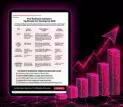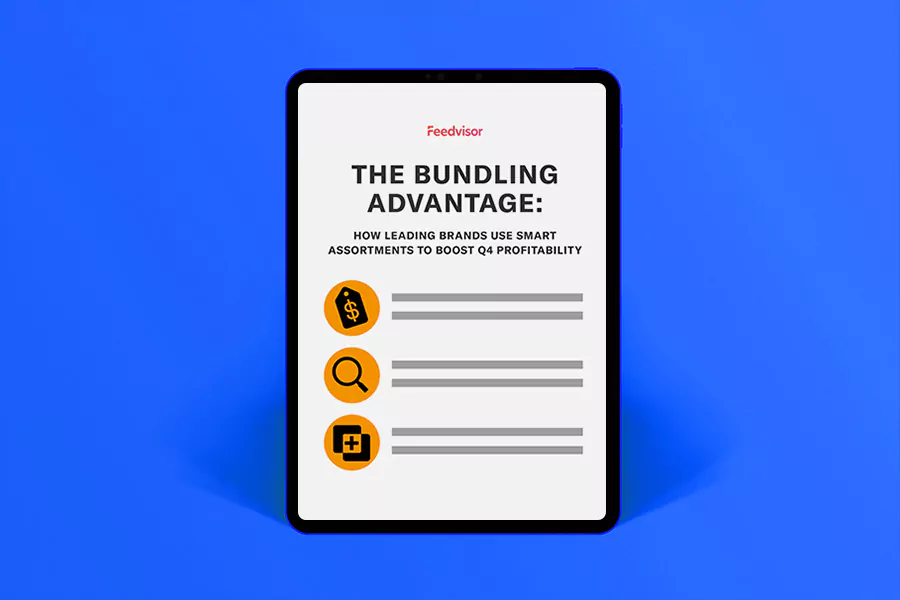
Categories
Latest Posts
Tags
Advertising Amazon Amazon Advertising Amazon Experts Amazon Listing Optimization Amazon Marketplace Amazon News Amazon Prime Amazon Professional Sellers Summit Amazon Seller amazon sellers Amazon Seller Tips Amazon Seller Tools ASIN Brand Management Brands Buy Box Campaign Manager Conference COVID-19 downloadable Dynamic Pricing Ecommerce FBA FBM Holiday Season industry news Multi-Channel Fulfillment Optimize pay-per-click Pricing Algorithm Pricing Software Private Label Profits Repricing Repricing Software Revenue Sales Seller Seller-Fulfilled Prime Seller Performance Metrics SEO SKU Sponsored Products Ads Strategy
Get the latest insights right in your inbox
Resource | Blog

Raising Prices Without Losing Sales: Tips for Navigating Elasticity on Amazon
SUMMARY
Learn how to manage tariff-driven costs and price sensitivity on Amazon with effective elasticity analysis and pricing strategies.

Rachel Horner
Tariffs are putting brands in a tough spot—caught between the need to protect margins from rising trade costs and the risk of alienating inflation-weary consumers who are more price-sensitive than ever. A temporary 90-day pause on steep Chinese import tariffs offers brief relief but adds uncertainty, with no clear plan once it expires.
Consider this economic climate the perfect storm. Brands are under pressure to raise prices in response to tariffs, but doing so on price-driven platforms like Amazon—where staying competitive is already a challenge—adds another layer of complexity.
That’s where price elasticity becomes mission-critical. It’s the key to finding the sweet spot: protecting your margins without hurting demand.
Here are our top tips for navigating elasticity on Amazon and pricing smarter in a high-stakes environment.
The First Step: Analyze Your Pricing Model
Start with a clear view of your total costs—including raw materials, shipping, packaging, storage, marketing, and any tariff-related expenses. This gives you a true sense of your break-even point and the margin pressure created by recent cost shifts.
Once you’ve accounted for these factors, especially new or increased tariffs, you can establish a minimum viable price that protects your margins, guides your elasticity testing, and serves as a baseline for strategic pricing decisions.
With your break-even price defined, run small, controlled pricing tests. Raise or lower prices incrementally and monitor how each adjustment impacts sales volume.
Be sure to isolate variables—avoid testing during promotional periods or when ad spend fluctuates. Clean data is critical to accurately assessing how price alone affects demand.
These tests help you pinpoint the sweet spot: the highest price your customers are willing to pay without a significant drop in sales. This is especially useful for identifying which products can absorb cost increases from tariffs and which may require a different strategy—such as bundling, repositioning, or adjusting marketing efforts.
Over time, you’ll gain the clarity needed to raise prices where it won’t hurt demand—and protect your profitability where it might.

Take Back Control of Your Margins
Tariffs may be out of your hands—but your pricing strategy isn’t. Talk to us today and turn uncertainty into opportunity.
Regain Control with the Right Fulfillment Strategy
If you’re selling 1P through Amazon, your pricing flexibility is limited. Amazon sets the final price, making it difficult to test how demand responds to different price points. Even with tools like coupons or subscribe-and-save discounts, measuring true price elasticity is a challenge—especially when price matching across retailers kicks in.
This lack of control becomes even more problematic in the face of sudden market shifts, like the recent tariff upheaval. Tariff policy has been anything but predictable—rates on Chinese imports surged as high as 145% before an unexpected truce brought them down to 30%. But this relief is only temporary. Brands and retailers must be ready to respond in real time, because these swings can—and do—happen overnight.
Research shows that import costs typically adjust within a month after new duties take effect. While some businesses may try to absorb the initial impact, historical data shows most ultimately pass on the added costs to consumers.
That window of adjustment is narrow—and waiting weeks to renegotiate vendor terms or adjust pricing can be detrimental to your margins.
With 3P, you regain that control. You own your pricing, can pivot suppliers faster, and adjust in real time as costs change. It’s the flexibility brands need to protect profits in a volatile environment.
Elasticity testing thrives in a 3P model. You can experiment with pricing incrementally, isolate variables, and capture clean data to tweak your pricing strategy in response to market volatility and new import costs—without interference from retail partners.
Understand Your Product’s Elasticity on Amazon
Price elasticity on Amazon varies widely—not just by category, but also by where a product ranks within that category. Top-performing ASINs often face highly elastic demand due to fierce competition, while mid- and low-tier products see less price sensitivity and weaker brand loyalty.
Elasticity also behaves differently on Amazon than in brick-and-mortar environments. Because Amazon is a price-driven marketplace, you need to focus on individual product profitability and price sensitivity rather than high-level performance metrics that might hide inefficiencies.
In other words, demand is often more elastic, and unit economics matter more than broad KPIs. That’s why elasticity should be monitored regularly—weekly or monthly—to catch shifts in shopper behavior, even if your pricing doesn’t change as often.
If your product was already price sensitive, new tariffs might push it past the point of profitability. Regular elasticity analysis helps you flag which SKUs are nearing that threshold—and which ones still have room to absorb cost increases without hurting demand. This insight lets you tailor your pricing strategy, raise prices more confidently, or proactively adjust positioning to preserve margin.
Take Advantage of Dynamic Pricing for Maximum Profit
Lowering prices doesn’t always drive demand. Raising them doesn’t always hurt it. In fact, in up to 80% of cases, small price increases have little to no impact on demand. But once you pass a certain threshold, demand can fall off a cliff. That’s the danger—and opportunity—of price elasticity.
Some products are elastic, where price directly impacts demand. Others are inelastic, where shoppers buy regardless of small price shifts. But most fall into a gray area, where demand holds until a tipping point, then crashes fast.
That tipping point is your profit sweet spot—where price, demand, and margin align.
With tariffs increasing your costs, identifying that sweet spot becomes even more urgent. If you’re already operating with thin margins, one misstep could push a previously viable product into unprofitable territory.
But finding it on your own is tough. Competitor moves, market shifts, and shopper behavior make it a moving target. Dynamic pricing, like Feedvisor’s AI, does the heavy lifting for you, using advanced price elasticity models to test, learn, and automatically adjust pricing in real time.
The result: Smarter price decisions, stronger margins, and dynamic strategies that evolve with the market.
Final Thoughts
Tariffs are reshaping the rules of e-commerce, creating pressure on margins and pushing price sensitivity to new heights. To thrive in this climate, brands need more than reactive strategies—they need intelligent, real-time solutions that adapt as fast as the market shifts.
Feedvisor’s AI-powered pricing platform is built for this challenge. Our technology continuously analyzes demand signals, competitor activity, and cost changes to help you price with confidence—protecting your margins without sacrificing sales.
Don’t let uncertainty erode your profitability. Get a free, 14-day trial of Feedvisor’s pricing optimization solution to stay ahead of market volatility and make smarter pricing decisions at scale.




